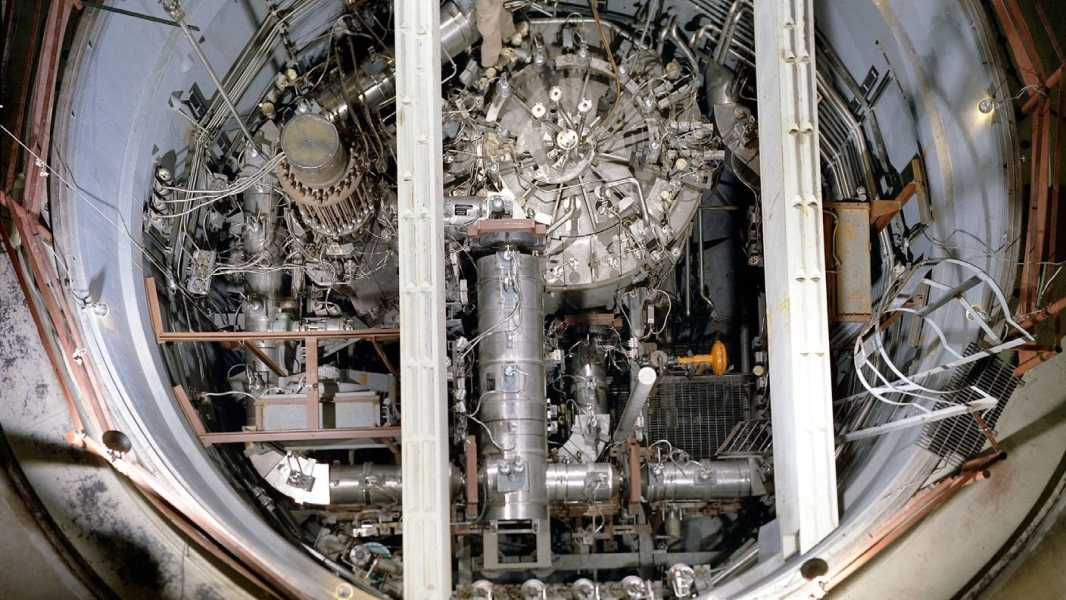
The molten salt reactor experiment at Oak Ridge National Laboratory is an early precursor to China's reactor. (Photo courtesy of Oak Ridge National Laboratory/U.S. Department of Energy)
For the first time in history, scientists in China have restarted an experimental nuclear reactor without shutting it down, marking a major step toward moving the world away from fossil fuels and toward more efficient, low-carbon energy sources.
The breakthrough, achieved through a prototype molten salt design using liquid thorium instead of uranium, shows China “now occupies a global leadership position” in nuclear innovation, the project's lead scientist Xu Hongjie said at a meeting of the Chinese Academy of Sciences on April 8.
The concept of thorium reactors was first developed in the 1950s in the United States before they switched entirely to uranium, according to the International Atomic Energy Agency. That early research was then declassified and Chinese scientists used it for the current project.
“The US has kept its research in the public domain, waiting for a suitable successor. We have become that successor,” Xu said at the meeting, according to the South China Morning Post, citing Guangming Daily. Citing a classic Aesop fable, he added: “Rabbits sometimes make mistakes or are lazy. That’s when the tortoise gets its chance.”
The secret facility housing the reactor, which is set to start up in June 2024, is reportedly hidden in the Gobi Desert in the north of the country, near the border with Mongolia. It is capable of producing two megawatts (2 MW) of power sustainably — enough to power up to 2,000 households and about twice as much as standard utility-scale generators, which “have a nameplate generating capacity of at least 1 MW,” according to the U.S. Energy Information Administration (EIA).
Abandoned technology, abundant fuel
Thorium reactors are a type of molten salt reactor (MSR) which, as the name implies, dissolve the fuel source in molten salt, which can act as both a coolant and a component of the fuel mixture.
Once in the reactor, this mixture is heated to temperatures above 1,112 degrees Fahrenheit (600 degrees Celsius) and irradiated with high-energy neutrons, causing the thorium to convert into uranium-233 atoms, which decay and release energy through nuclear fission.
Molten salt nuclear reactors are considered significantly safer than their solid-fueled counterparts because they cannot melt down—their already-molten fuel simply cools and solidifies when exposed to air. This means that disasters like those at Chernobyl in 1986 and Fukushima in 2011 would not have been possible with a thorium reactor. The reactors also produce significantly less nuclear waste than standard uranium reactors. In fact, waste from solid-fueled uranium reactors can be used as fuel for molten salt reactors.
Although uranium can be used in RRS, scientists generally prefer thorium because it is easier to mine and three times more abundant than uranium.
China has long sought to launch a full-scale thorium power plant. The country is responsible for about 27% of global carbon emissions, and President Xi Jinping aims to make it carbon neutral by 2060.
Thorium is a particularly attractive means to this end for China, as huge reserves of the element have recently been discovered on its territory. A national geological survey has found that the country has enough material to meet its energy needs for 60,000 years, by some estimates, the South China Morning Post reports.
Molten salt reactor concepts were first developed in 1946 as part of a plan by the US Air Force (the forerunner of the
Sourse: www.livescience.com





